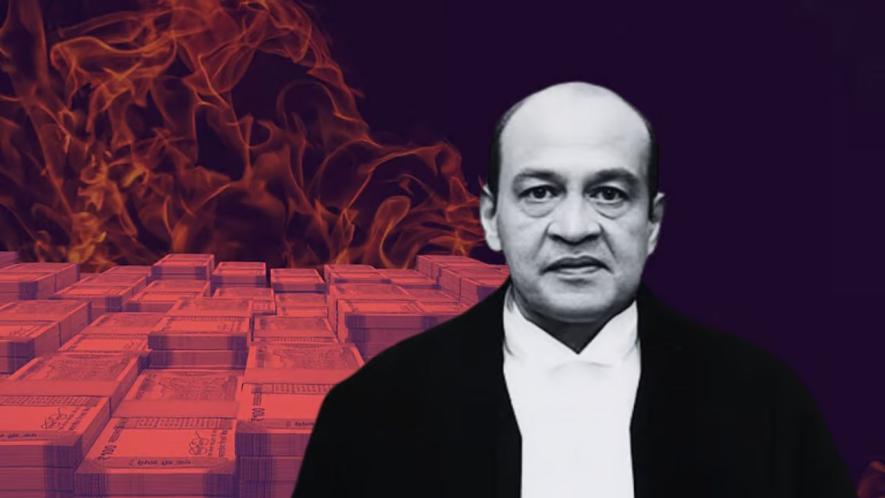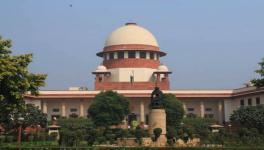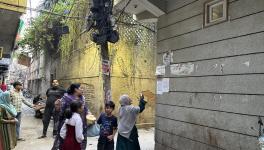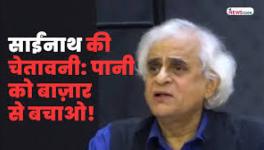Black Economy? 4 Possibilities on Justice Varma ‘Cash Scam’,

A Video shared by the Supreme Court on March 22, which allegedly shows burnt cash in a store room in the residence of Justice Yashwant Varma, a Delhi High Court Judge who has since been repatriated to Allahabad, has shocked the nation. The amount must run into crores from the looks of it. But it is established that there was a fire in his outhouse and his family and staff had called the police. Someone took video and pictures of the burnt cash being doused by the fire fighters and this has come into the public domain from none other than the head of the judiciary, the Chief Justice of India. The CJI has ordered an enquiry by three judges.
CJI Sanjiv Khanna’s decision to put redacted material on the Supreme Court’s website is welcome since it cleared some of the air. But the in-house inquiry committee may be somewhat premature since much investigation is required by the police and other investigative agencies to come to definitive conclusions.
This is critical since Justice Varma has stated that the money is not his. He is likely to reiterate this otherwise he would indict himself and be open to criminal prosecution. It is also likely that given the serious implications of this episode, the full truth may never come out.
Whatever the in-house committee’s conclusions, this episode is linked to illegality and black income generation. This link needs to be understood.
Whatever the in-house committee’s conclusions, this episode is linked to illegality and black income generation.
Sequence of events
There are many curious aspects to the case. How did Justice Varma come to have in his residential premises such a huge amount of currency notes? They were in an outhouse and not securely in the residential portion of the judge’s house. If he says it did not belong to him, did someone plant the notes to discredit him and also start a fire where the notes were stored so that they come to the notice of the authorities?
The fire occurred on March 14 and the news became public on March 20, almost a week later. The police apparently informed the Chief Justice of the Delhi High Court on March 15 and he informed CJI Khanna.
The Supreme Court’s Press Release on March 22also annexes relevant documents like Chief Justice D.K. Upadhyaya’s letter to CJI Khanna and Justice Varma’s response. These help clear some of the confusion in the public domain.
There are three significant points in the Commissioner of Police’s (‘CP’) report. First, the Personal Secretary of Justice Varma called the police and not the fire department and it was the PCR that informed the fire department. Second, the store room is next to the CRPF Guard room and is kept locked. Lastly, the guards reported that on the morning of March 15, half burnt articles and debris were removed from the room.
Chief Justice Upadhyaya asked his Secretary cum Registrar (‘SR’) to visit the site and give a report. The SR visited the site and inspected the room in the presence of Justice Varma. In the Report there is no mention of any burnt cash found at the site. With all this information, CJ Upadhyaya on returning to Delhi on March 16, met CJI Khanna and briefed him. On CJI Khanna’s instructions, CJ Upadhyaya met Justice Varma on March 17 at 8.30 am and got his version of the episode.
Could it be legitimate savings from the judge's hard earned money?
Justice Varma denied that there was any cash in the store room. Upon CJ Upadhyaya showing him the video and pictures given to him by the CP, he expressed apprehension that a conspiracy was afoot against him. But, CJ Upadhyaya in his letter to CJI Khanna mentions that there was no possibility of any outsider having access to the store room and suggested a further enquiry in the matter.
After these rapid moves to get to the bottom of the episode, there was a pause till March 21. The Press got to know of the episode and made the matter public on March 20. There was much consternation in the country and in the Parliament. Thereafter, a flurry of letters were exchanged between CJ Upadhyaya and CJI Khanna. Finally on March 22, CJI Khanna set up an inquiry to get to the bottom of the matter and CJ Upadhyaya was asked not to assign any judicial matter to Justice Varma.
Four possibilities regarding the cash
Assuming the burnt cash belonged to Justice Varma, how come it was so carelessly kept in a store room away from the main residential portion of the house and which the staff could see?
Could it be legitimate savings from the judge's hard earned money?
The implication of ‘judgments for a consideration’ would be catastrophic for the Indian system of justice.
It is implausible that so much could be saved from the salary of a public servant. He enrolled as an advocate in 1992 and became a judge in 2014. Successful advocates do charge huge fees. Could it be cash from those days?
Even so, why keep it unproductive in cash and not in a bank where 7 to 8 percent interest could be earned on fixed deposits and more on other legitimate investments? Keeping liquid cash points to tax evasion.
Second, could it be that some asset was sold recently and the cash came from that transaction? Again, cash would imply tax evasion. The white part would be in the form of cheques so that there ought to be a matching transaction in a bank account.
Third, and the worst case scenario is that the cash was paid for favours by the judge. There are plenty of ways a judge can favour contending parties to a case. There are two contending parties in a case and both claim to be in the right. Both would want a judgment in their favour. There is subjectivity in making decisions and that enables judgments to be swayed for consideration. For instance, an arrested person would like to get bail or someone may want anticipatory bail. Though ‘bail and not jail’ is the rule, judges have typically used their discretion in the matter.
It is surprising that Justice Varma did not rush back after he learned of the fire in the store room. Is it because the burnt cash was a small part of a much bigger horde of cash kept elsewhere? It is also possible that the bulk of the illegal earnings have been invested safely in assets in India or taken out of the country via hawala and the process of layering. This needs investigation.
The implication of ‘judgments for a consideration’ would be catastrophic for the Indian system of justice. Judgments not only of Justice Varma but even of other judges would be suspect. Litigants across the country will feel increasingly that our court system is incapable of delivering justice and public faith in the judiciary would be seriously dented.
Fourth, as Justice Varma has implied, has a conspiracy been hatched against him? Could the cash have been planted on Justice Varma and the fire started to bring it to public notice? It is a coincidence that the fire took place where the cash was stored and while the Judge was on a holiday. If this turns out to be true the implications for India’s justice system are even worse.
Such a conspiracy would not be possible without the involvement of powerful vested interests and very likely the official machinery. If this turns out to be true, why are powerful forces out to discredit the justice system?
Is it a precursor to creation of public opinion to force changes in the judicial system? This will be disastrous since the vested interests would want to use the occasion to obtain greater control over the judicial system. Given that they are themselves compromised, this would be the worst case scenario.
Links to growing black economy
It is not difficult to see what the vested interests want. They generate a huge amount of black income and desire to wield unchecked power to legitimise their functioning. This has led to a rapidly growing black economy in India which for its survival requires curbing the autonomy of democratic institutions.
In a vicious cycle, the black economy becomes systematic and systemic.
Political corruption is rampant in our country. Even Panchayat elections are not immune to heavy election expenditures behind campaigning. Money is needed by politicians for election financing, toppling of governments and sustaining cronyism. Cronys are appointed in every institution so as to minimise (and eliminate) opposition to the ruling establishment. The cronies in positions of authority not only do the bidding of those in power, but also suppress dissent and generate black income by blatantly circumventing the law. They expect a share of the loot. The system is akin to the functioning of a mafia.
Corporations in India are a part of this system. They pay huge sums as fees to lawyers who are able to sway judges to speed up or delay judgments depending on the case. Such lawyers also become judges and perpetuate the nexus.
It is undeniable that money has been caught at the residential address of Justice Varma. Its source needs to be investigated.
What should happen now? The system cannot clean itself on its own since those in power are the actors in the drama.
Illegality and black incomes are associated with it and four scenarios are possible, each worse than the other. A decline in the system of justice has been apprehended and now a concrete case has emerged to justify the suspicions.
What should happen now? The system cannot clean itself on its own since those in power are the actors in the drama. They will not check themselves. It has not happened in the past when attempts have been made and the black economy has continued to grow.
Only public pressure can make a dent.
Arun Kumar is a Retired Professor of Economics at the Jawaharlal Nehru University.
Courtesy: The Leaflet
Get the latest reports & analysis with people's perspective on Protests, movements & deep analytical videos, discussions of the current affairs in your Telegram app. Subscribe to NewsClick's Telegram channel & get Real-Time updates on stories, as they get published on our website.
























